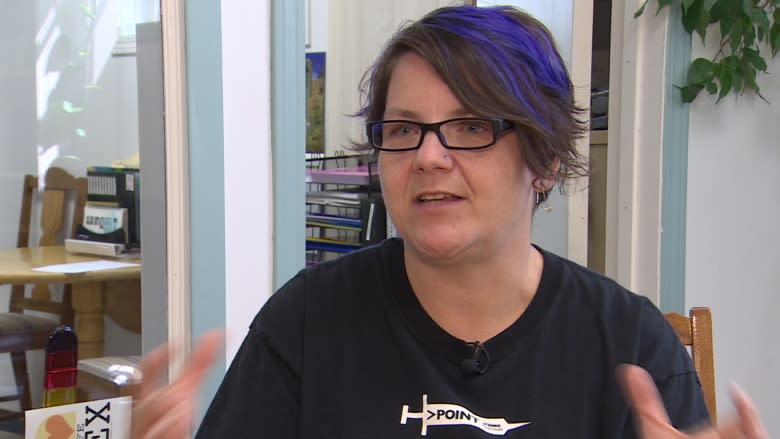Alberta effort to ease fentanyl OD epidemic rests on naloxone
Alberta Health is rolling out a new weapon to slow the epidemic of overdose deaths linked to the street drug fentanyl.
The opiate — a painkiller 100 times more potent than morphine and relatively unknown on Alberta streets a few years ago — was responsible for more than 120 deaths in the province last year alone. In the first two months of this year, 50 more people died.
"There are more overdose deaths from opiates than there are fatalities from car accidents," said Jennifer Vanderschaeghe, executive director of the Central Alberta AIDS Network Society in Red Deer.
Vanderschaeghe's agency, which runs the region's harm reduction program, is one that will soon be distributing the wonder drug the medical community is leaning on to save the lives of those at risk of fentanyl overdose.
The province is spending $300,000 to get naloxone to agencies across the province that run drug abuse programs.
"It will be earth shattering," Vanderschaeghe said. "We'll be able to save lives."
Naloxone, slows the progress of fentanyl, giving overdose victims more time to get to a hospital.
"It basically stops you from overdosing, and gives you 30 to 60 minutes of time where opiates can't be working on your brain," she said.
Drug users can administer naloxone themselves.
Naloxone familiar to Edmonton agencies
Edmonton agencies have been using the naloxone for almost a dozen years, but it's new to the rest of the province, Vanderschaeghe said.
"We're ready to go," she said. "We have nurses already who are going to be able to train people who use opiates. Right now what we're waiting for is the for the naloxone to show up."
The naloxone program will be rolled out across the province in the next few months, said Michael Trew, chief addiction and mental health officer with Alberta Health.
The shocking jump in the overdose rate over the last two years has given the province a sense of urgency, he said.
"We need to save lives with a treatment we know worked and find a way to get that drug out in situations where it can be used, because it needs to be used very quickly," he said.
While the epicentre of the crisis remains at the far south end of the province on the Blood reserve, Taber, Lethbridge and Pincher Creek, the need for naloxone is urgent everywhere, Vanderschaeghe said.
"The best time to start an overdose program was many, many years ago," she said. "The second best time is today. Any overdose death is one too many.
"We're excited to show people who use drugs that Alberta Health cares, that we care, and that staying alive is the most important thing of all."



